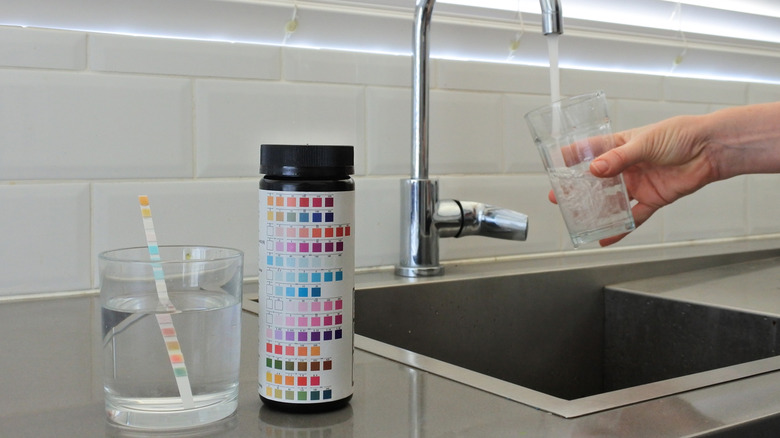Keep An Eye On Your Home's Tap Water: Standards Are About To Change
From washing dishes to taking a shower, most of us take tap water for granted. In much of the United States and many parts of the world, safe and drinkable water is reliably accessible without a second thought. But if you don't have a private well, you should know about the municipal water supply that's supplying your home. Since purification and monitoring happens long before water reaches the faucet, most of us assume the chemicals and microbes are kept largely in check by treatment plants and the workers who run them. But water quality isn't assured, as anyone who's gotten a call or seen a Facebook notice about a boil water advisory in their area knows all too well. Consumers are also growing more concerned about "forever chemicals" that public health advocates and scientists warn are wreaking havoc on countless water systems and the millions of people who rely on them. Recently, the Environmental Protection Agency announced revisions to the national drinking water standards that will reshape how per- and polyfluoroalkyl substances (PFAS) are regulated, which may have serious implications for your daily water supply.
To understand the significance of these changes, it's crucial to know exactly what PFAS are and why advocates are so concerned about what they view as dangerous deregulation. The highly toxic substances are found in everyday products, ranging from nonstick cookware and food packaging to stain-resistant fabrics and smart watches. They don't break down naturally, meaning they accumulate over time in water supplies. Multiple studies link long-term exposure to PFAS to a range of serious health issues, including cancer and reproductive and developmental effects, which is why the regulatory rollbacks are causing so much concern.
Looser tap water regulations may expose you to more PFAs
In essence, the EPA's proposal loosens rules around closely watched PFAS. Less than two years prior, the EPA actually set strict limits to keep these "forever chemicals" in check, setting Maximum Contaminant Levels for the most common of the thousands of PFAS chemicals. Now, the EPA (alongside pushing the compliance deadline for suppliers back two years) is attempting to roll back enforceable limits on four of the six regulated PFAS chemicals, using what has been described as a flexible approach. Rural and smaller communities will be especially affected by this change because they rely on smaller water systems and have fewer resources to monitor or remove PFAS. If you live in a rural area, deregulation is a double-edged sword. On the one hand, loosening federal rules with extended compliance deadlines and ambiguous hazard indexes means there's less need for immediate funding for expensive infrastructure upgrades or technical expertise, which would typically happen through large tax increases. However, it leaves affected areas with higher potential exposure to PFAS for longer periods, including ranching and farming communities that may be forced to rely on contaminated water to produce our food. And if you want to purify your household water and eliminate harmful toxins like these, you may find yourself spending big bucks anyway as you invest in whole-house, shower, or sink filters to keep your family safe.
The EPA's decision means municipal water utilities, along with industrial and chemical companies, will benefit from extended deadlines, flexible standards, and lower compliance costs. To protect yourself and your family, use certified water filters and high-quality drinking water testing kits regularly. Going a step further, you can advocate for healthier water by reaching out to your elected representatives about stronger regulations.

